From White Cube to Blue Skies: Dr Omar Kholeif on masterminding a milestone exhibition
Conceived as a ‘love letter’ to London and extending from Lisson Gallery’s venues onto the streets, it’s easy to see why ‘Finding My Blue Sky’ became one of the most talked-about art exhibitions of Summer 2025. The monumental project, featuring works by 30 international artists from diverse backgrounds and eras, was curated and ‘choreographed’ by Dr Omar Kholeif, who until recently was the longtime Director of Collections and Senior Curator at the Sharjah Art Foundation, and a key figure on the UAE’s art scene. In this interview, Dr Kholeif, who recently also took up a Professorship at the historic Glasgow School of Art, reflects on ‘Finding My Blue Sky’s’ scope, significance and success.
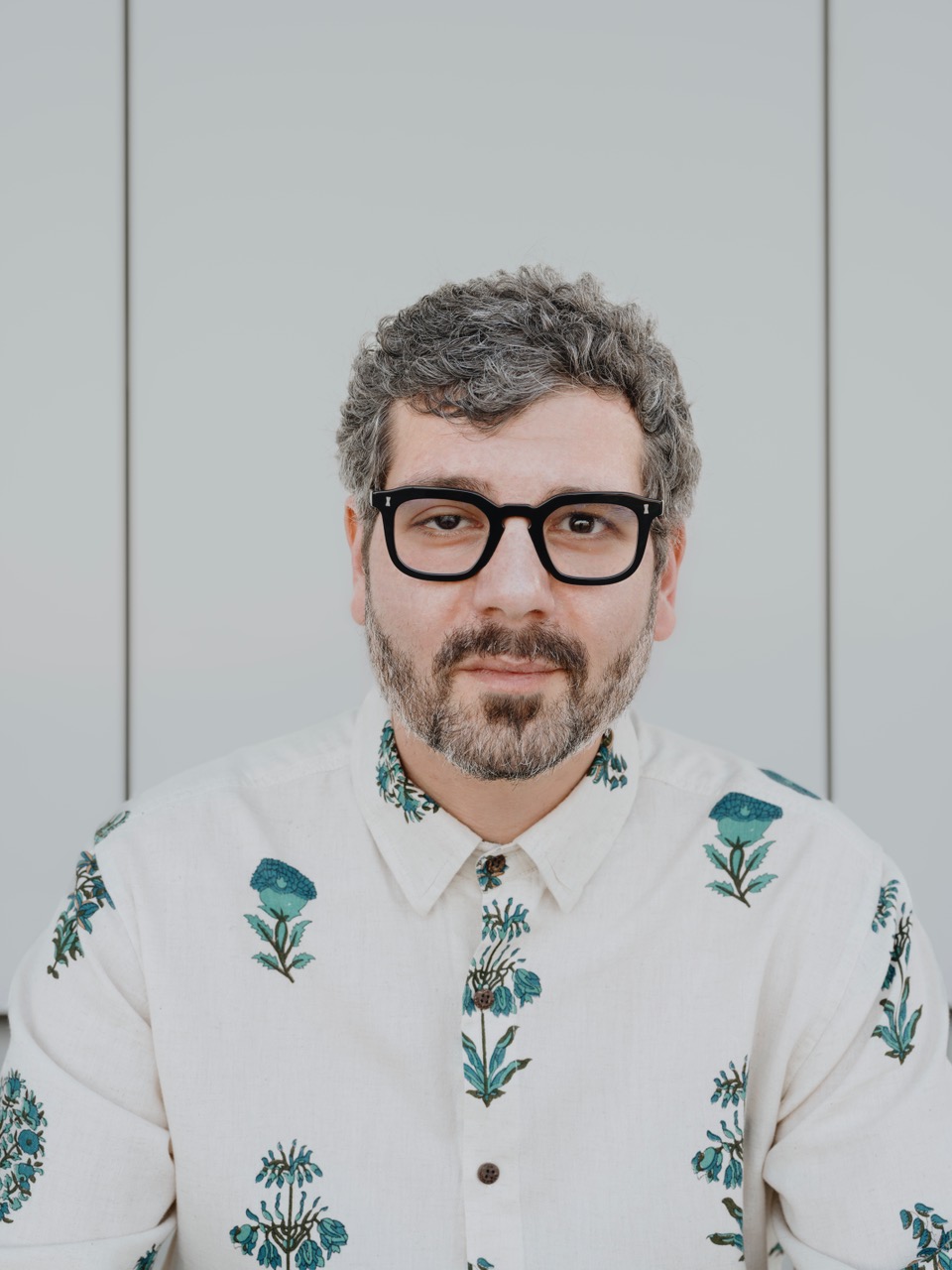
Portrait of Dr Omar Kholeif by Danko Stjepanovic. Photo courtesy of artPost21
You’ve described your recent high-profile exhibition ‘Finding My Blue Sky’ as your “love letter to London”. What prompted you to frame the exhibition within the concept of a written narrative and how did that decision influence other aspects of the project?
Thank you for picking up on this point! It’s the most crucial aspect of the show. As soon we began installing, I started to refer to ‘Finding My Blue Sky’ as a series of love-letters situated in London: an amalgamation of epistolary forms with and amongst artists who lived in London, who hailed from its boundaries or its diaspora. Most often, they were individuals whom I met in a chance encounter on a London street corner when they were merely visiting, and what ensued was a lifetime’s worth of correspondence, regarding their backstories, and of course, about the city, and where we met. I was concerned with the notion that a place could serve as a nexus, as a site of ‘becoming’ for creative individuals from such diverse cultural backgrounds, and how looking at this history could enable a re-consideration of how one mapped a series of routes to and through classical modernism.
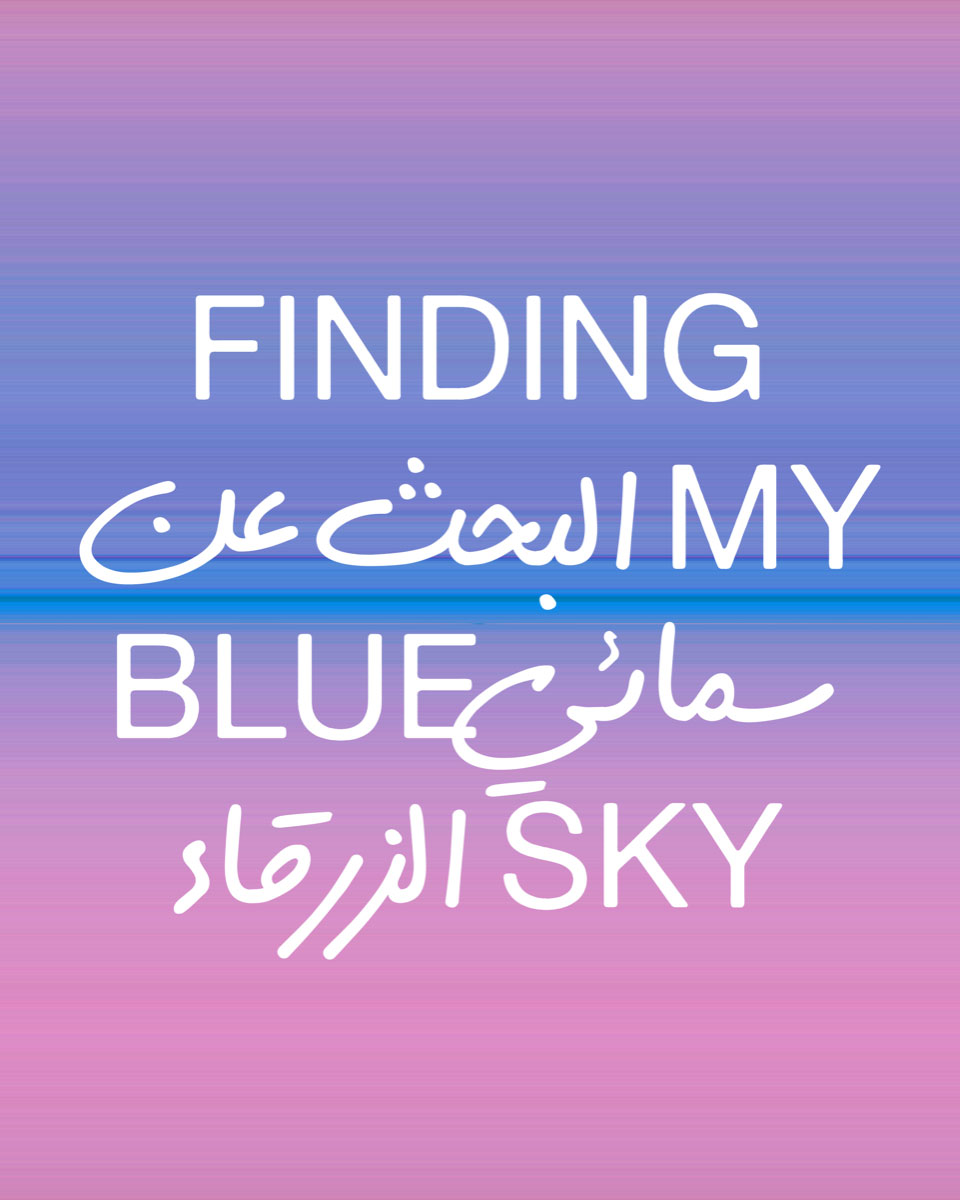
Poster and Brand identity for 'Finding My Blue Sky' conceptualised by Marwan Kaabour
London has faced some difficult realities lately - protests, violence and social tensions, to name just a few. You clearly have huge affection for the city. Did you find those realities challenging to address when crafting your love letter to the city?
I am a historian. I am also a storyteller. I have my very specific interest and a specificity that I am curious about. In the end, I realised that this was not a love letter to a city but to a kind of diasporic imagination that bound strangers together in a temporary grip, for moments in time -instances where they could convene to share knowledge, kinship, friendship. My starting point was particularly this beautiful gallery -Lisson Gallery - a place founded by an artist in the 1960s, unlike others. It has remained on the same street in London ever since, nearly 60 years later. The surrounding neighbourhood - the Edgware Road, which during my childhood was nicknamed ‘Little Cairo’ and ‘Little Beirut’, became a site of longing - a place that many like me wished to belong. The truth of course is that constellation of individuals who perambulate around these areas is continually shifting. Church Street, which runs perpendicular, feels much like a street in Damascus during lunch time. A multitude of educational establishments surround what is also a densely populated residential area. At school pick-up time, you can here so many variations of the Arabic dialect. Moroccan has been long standing in this place - the Daraja so familiar at times, that one would think Ladbroke Grove were an annexed fishing village akin to LaRache. It is this creolisation of tongues, of accents - the constant cross-pollination of cultures, fused with Greek, Urdu and so much more. This rupturing of the silo presents a last bastion, a utopian alternative to the polarisation that we continue to face globally today.
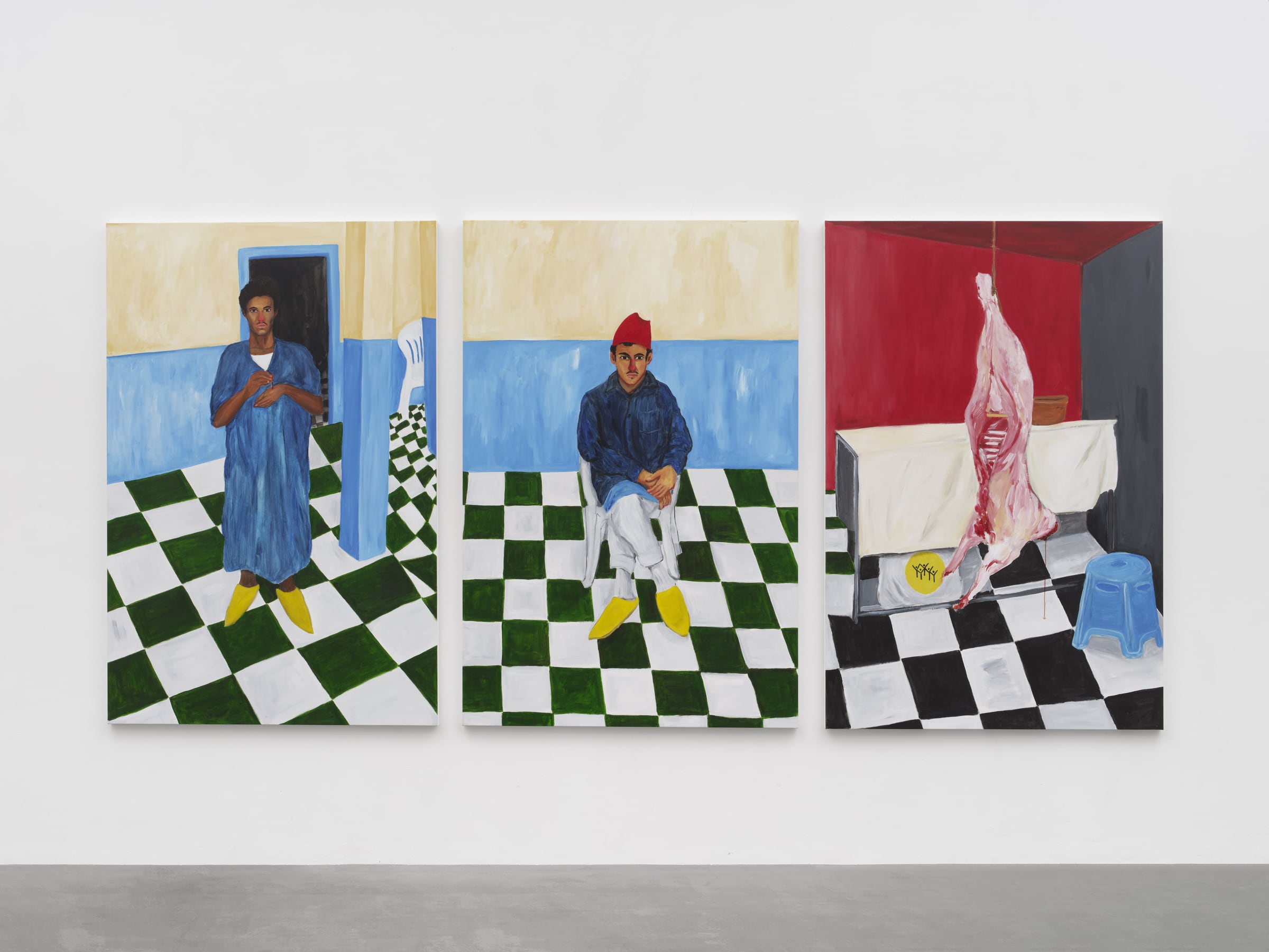
Anuar Khalifi, Aqiqah or aqeeqah, 2024. Courtesy the artist, Lisson Gallery, London and The Third Line, Dubai
The exhibition carried parallel titles – ‘Finding My Blue Sky’ in English and ‘What is the world that you dream of?’ in Arabic. Did they dovetail or offer different entry points for visitors?
They were originally constructed as a title and a subtitle, but our consultant graphic designer, the incredible Marwan Kaabour, who worked with the project team for well over a year, studied the architecture of the entire street with us.
What was unique here was that we were inhabiting both of Lisson Gallery’s London venues, performing an entire takeover of the vicinity. Together, we decided to typographically bring this question forward as a prompt, as opposed to tucking it away.
I often use prompts in exhibitions - a practice that I gleaned from working and studying the art of the inimitable artist, Lubaina Himid CBE RA, who was featured in the exhibition. Indeed, here, her art presented me with a formative starting point. On the intersection of Penfold Street and Bell Street were these large blooming ‘questions’, which Himid had drawn on from significant cultural poets. These were interwoven into culturally significant patterns, assuming the structure of an East African ‘Kanga’ that now looked much like a ‘flag’ - a corpus, a skin, a body, becoming a whole. Their presence was a summoning for passersby to dream, but also to consider the impossible, as with the prompt, ‘There could be an endless ocean…’. You could then see the delicately hand-painted versions inside the Bell Street gallery, just by peering through the windows, which I had sought to unmask and make visible. I wanted to make the street sellers, and the school children feel that art history was as accessible as anything you’d find in a storybook - and indeed, it is!
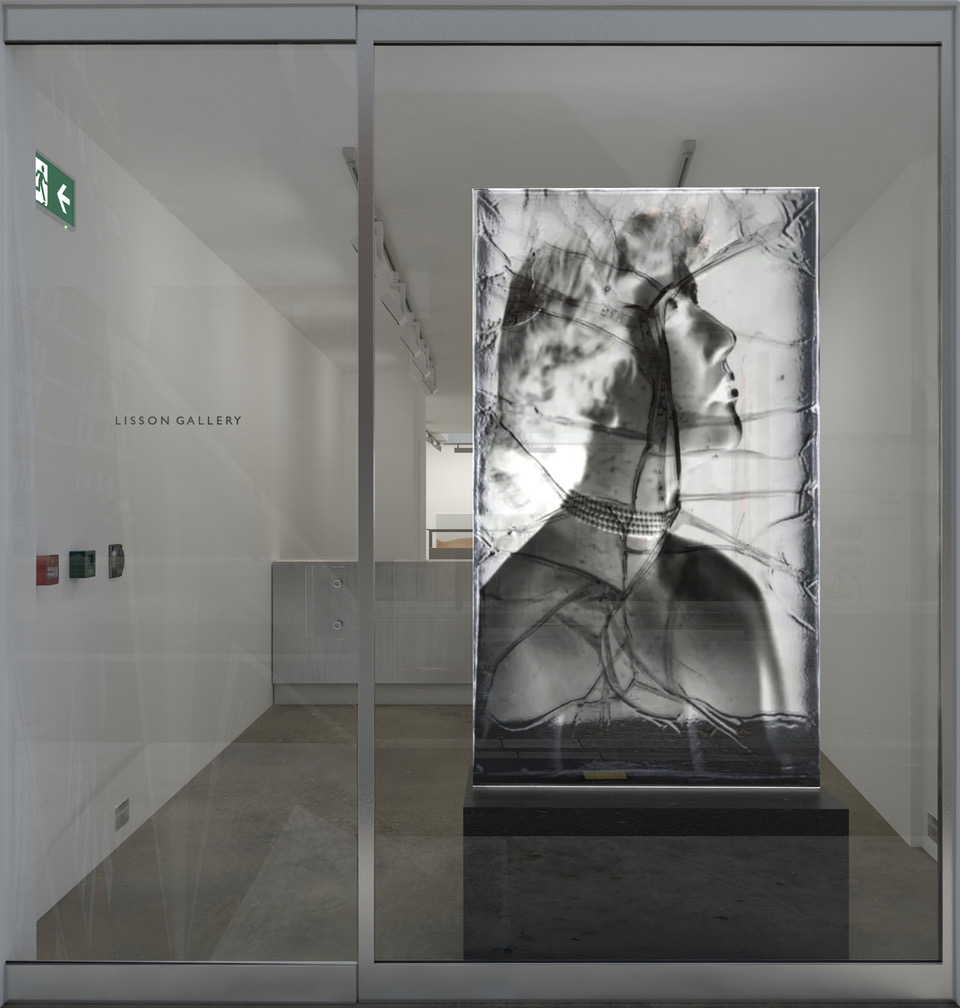
Installation view: Hrair Sarkissian, Residue, 2019
Courtesy the artist, and Lisson Gallery, London
Why was it important for you to break those traditional ‘gallery wall’ boundaries?
The exhibition began with a desire to dialogue. It was a fully-fledged hand-in-hand partnership with Lisson Gallery from day one. I kicked it off with a summer school for staff, where we ate manakeesh; shared heirlooms and developed a vocabulary for articulating their significance; listened to Arabic music; looked at the etymology of words that we would use to speak about art; examined the baseline of certain aesthetic practices, and subsequently how they connected together, in unusual ways across art history.
One of the aims was to help staff find fluent trails, routes, maps and traces to multiple fields of modernity, or rather modernities. I wanted to make evident through illustrated dialogue that the courtyard played a central role in modernity and that it was visioned in multiple ways by women artists whose work I’d wanted to present. Each artist could make you think of that space differently: sleep, leap, or simply come to a contemplative stand-still.
Women of the Arab diaspora, especially, were bridging worlds, using architectures of inside and outside, with forms that extended beyond the limits of any singular language. Within this milieu, we can invoke Saloua Raouda Choucair’s Spiral Rhythm (1985-1987), whose modular tessellating structure served as an evocative anchor to position one’s gaze. Choucair of course produced many works for the outdoors and had dreamed that one day she would have a major public sculpture in the capital of every Arab city. Caland’s bronze sculpture made a London debut, along with over 100 works by several ancestral figures premiering for the first time, including my beloved Sonia Balassanian and Monir Shahroudy Farmanfarmaian. Farmanfarmaian’s final work, Khayyam Fountain, 2018, became a tessellating proposition for a refractive architecture of light that played with what was inside and outside. Here, I decided to bring her into conversation with the New York she orbited in the 70s, bridging worlds with the orbitals of Sean Scully, and then leaping forth into the electric fields and musicality of the one and only Haroon Mirza. In the end I had one goal, which was to see if I could achieve what I would in an institutional framework, and more - to sow a seed which could evolve and nourish conversations that would fuel and sustain a whole garden, a community.
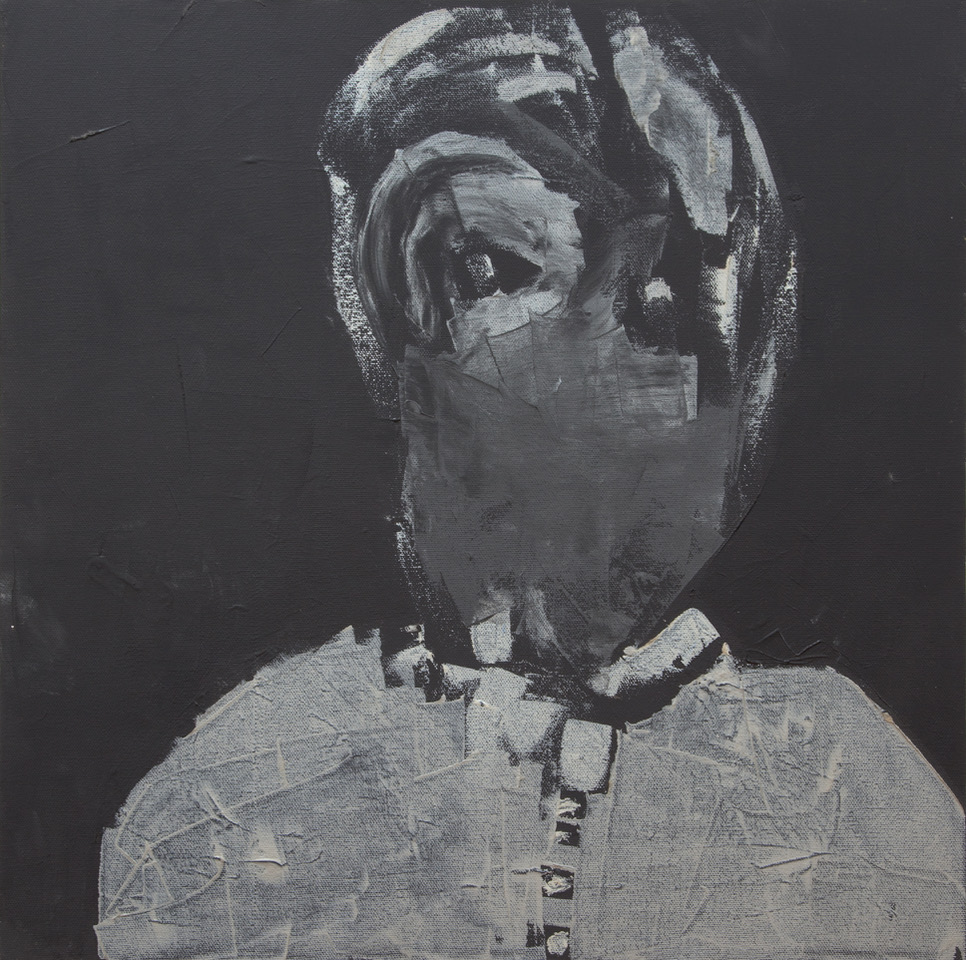
Huguette Caland, Self Portrait, 1993,
Courtesy the Estate of Huguette Caland and Lisson Gallery
‘Finding My Blue Sky’ was epic in scale and scope, featuring the work of more than 30 artists spanning different generations and backgrounds. How did you decide where to position each artist’s work within the ‘constellation’?
It was much akin to choreographing to a piece of music. Once I had explained the threads that would bind the trail, I needed a prompt. I engaged each living artist or respective estate individually and asked them to present me with a ‘key’ work in their oeuvre that represented an ‘inflection point’ in their career, i.e., a work that changed something inside of them. Even if the work was not available for loan. Then we would discuss that at some length. Following this period of gestation, I queried: What would you make now? Which feels most urgent to you?
From this, overlapping worlds and vocabularies evolved. Seeing Sean Scully’s majestic Rabat Blue, 2024 come to life was much like witnessing an act of surrender, having been introduced to his first abstract work, Soft Ending, 1969, made after an initial visit while he was an art student to Morocco. The inflection of light on his ontological view ricocheted into my dialogue with the Moroccan Spanish artist, Anuar Khalifi, based between Barcelona and Tangiers. After all, Scully has also lived several years in Barcelona.
Conversations emerged regarding the resistance of figuration in Islam. The appropriation of abstract motifs by the likes of Paul Klee and Matisse. But we parked those aside. The will to resist certain aesthetic tendencies recurred. Ultimately, the codification of painting and pattern in society became an occupation that we both took very seriously. We did not care what the status quo was.
The need to surrender to painting itself was the only option. Khalifi, I believe, experienced radical growth, developing three new major bodies of works commissioned especially in dialogue with the locality - gleaned from hours of conversation, travel, listening, reflecting, refracting. His painting White Shoes, 2024 embodies a familiar sense of estrangement that will trigger memories to many who orbit the diaspora. But it is also sutures and holds within its skin the humour synonymous of a trickster.
One single artist is impossible to speak of alone - sightlines were imperative to the decision-making, as were the shared histories amongst artists. Painter Celia Hempton acted as a kind of panopticon throughout the show, with a dozen works. Her topographical paintings of the Edgeware Road (commissioned especially) fashioned an index of a world in flux, in free-wheeling madness, but hold out your hand, and you just might catch a piece of it, one that is all yours.
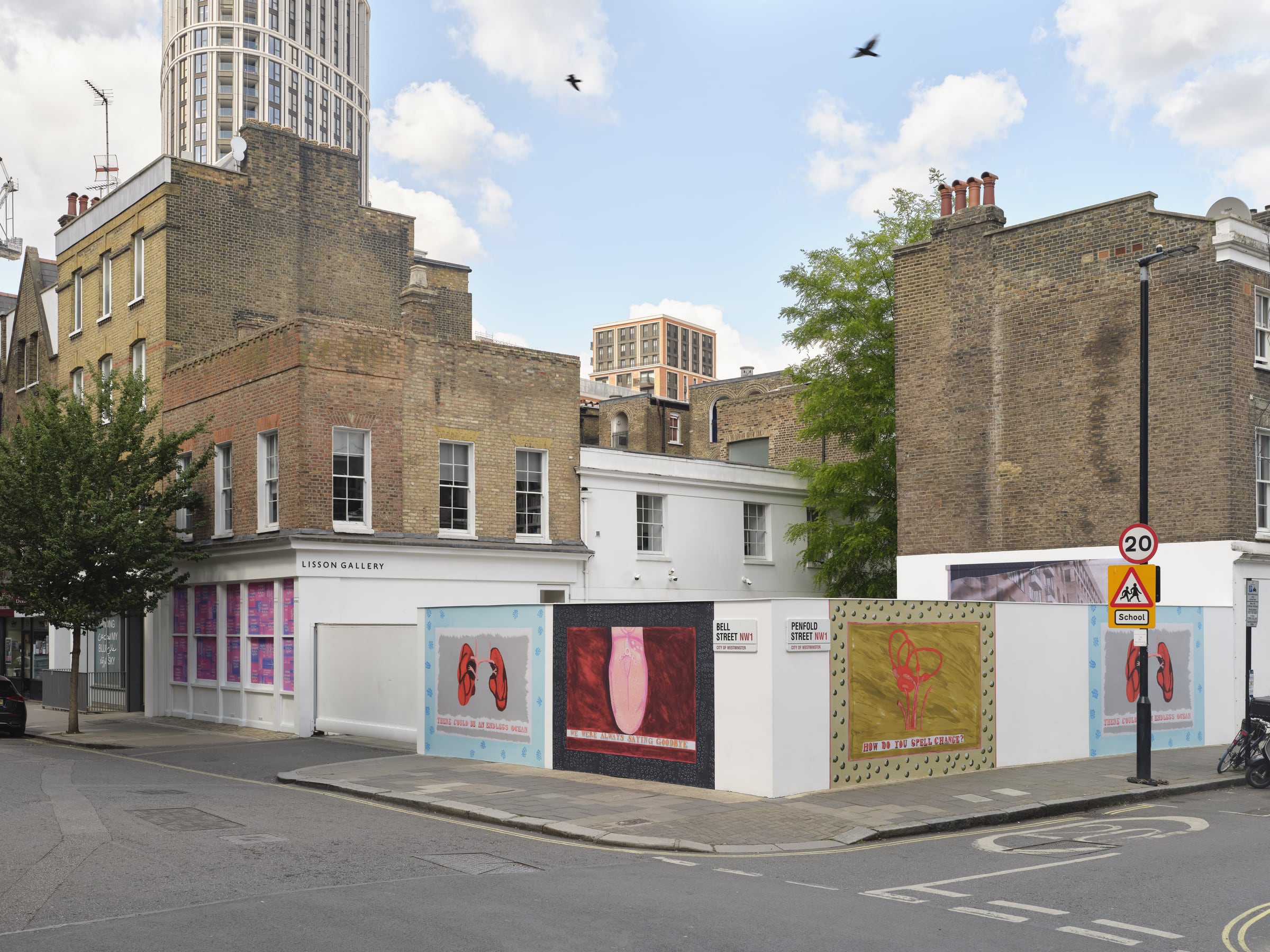
Lubaina Himid Freedom Kangas installation as part of 'Finding My Blue Sky' Lisson Gallery 2025
Looking back, were there specific works that seemed to resonate particularly strongly with visitors? What do you think sparked those connections?
Nobody knew who Luísa Correia Pereira was when I introduced the 24 works into the exhibition. She had never exhibited in London before. And she is the person that individuals keep returning to speak to me about most. I am currently authoring her first biography in the English language as part of the imagine/otherwise imprint that I co-founded with Sternberg and the MIT Press, which will come out in the Spring of 2026. I am delighted that her dear friend, Maria Filomena Molder has been supportive of this endeavour. Correia Pereira, during her lifetime, was dubbed, the enfant terrible of the Portuguese art scene. Portugal, this small country at the edge of Europe, has colonised many a mind, nation and an imagination. Yet, it sits at the precipice of our geographic crosscurrents. As a landmass and nation, it is where mainland Europe ends and the Atlantic begins. It is verdant, as it is chaotic, as it is developed and poor, and shell-shocked, as the African continent that exists in its proximity. The place where I am from. I wanted to thread those parallels.
Luísa’s art was a skin that threaded across linen and paper. An abundance of energy materialising in collage and grattage - the intoxicating creolisation of hybrid aesthetic languages and cultural idiom seep into one another. A salon of her work formed a constellation. It formed an entire world across from the art of Huguette Caland and Simone Fattal. Collectively, audiences started to see something for themselves that I was hoping that they would attend to. Just how fine the line is of being looked at in one instance and ignored by society, in the next, can so easily occur. Click you are here, click you are gone. It’s not magic. It’s no superpower. Sadly, it’s a schizoid aspect of culture that requires fine tuning, i.e., we need to keep looking back to protect certain forms of aesthetic culture from erasure. Our modus operandi is to forget.
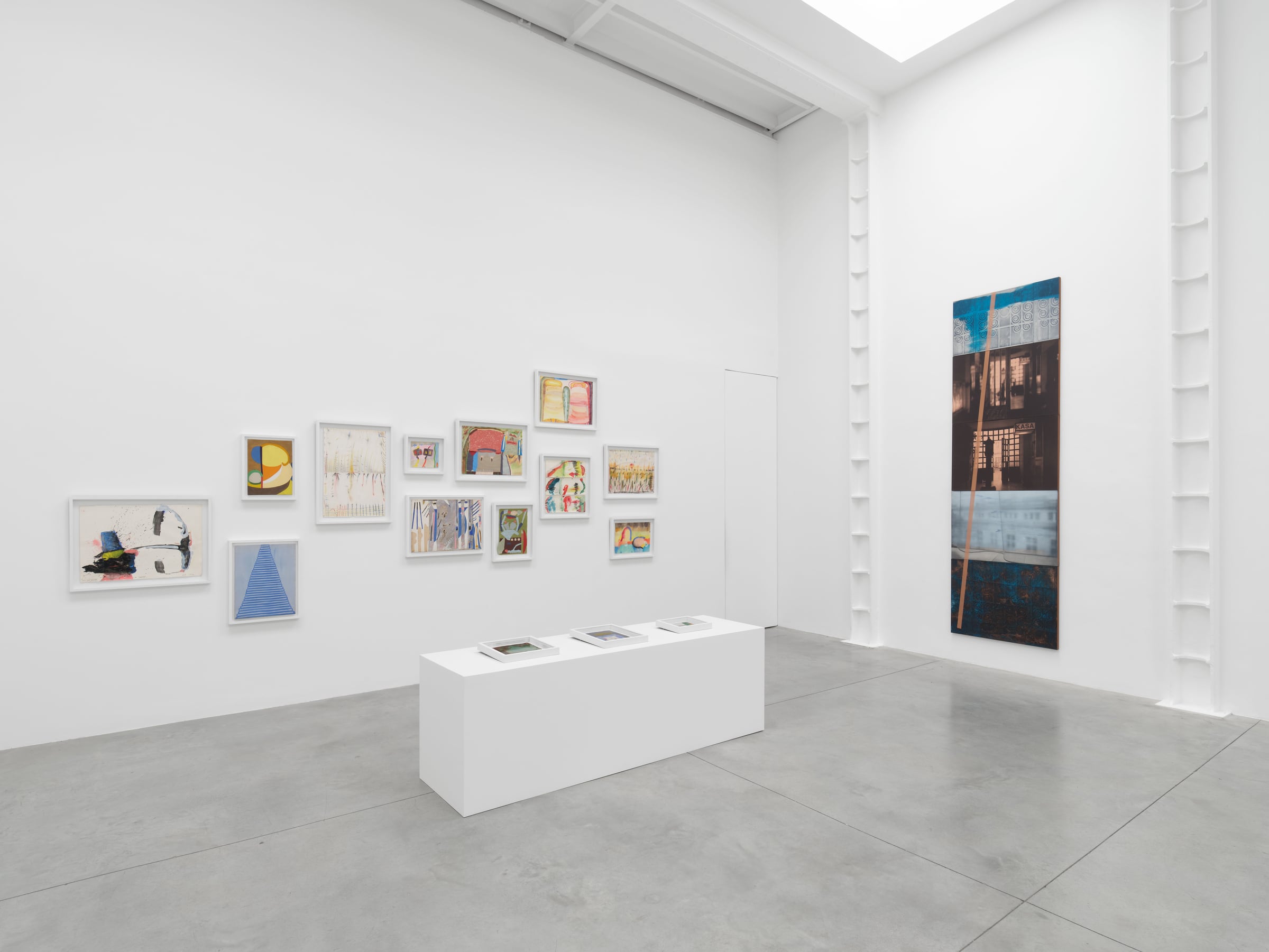
'Finding My Blue Sky' installation, London 2025
What did you most hope visitors would take away from ‘Finding My Blue Sky’?
I began this show with a question to myself that emerged when we started to come out of the COVID-19 lockdown:
What happens after the worlds ends?
You wake up. You are still here. Required to be responsible. There is a necessity to be accountable. We still have shared concerns, collective endeavours to fulfil as part of advancing human understanding. To make histories visible, which otherwise would not be attended to. And that is what I want people to walk away with - with the sense that they are a part of something larger than themselves. Bigger than you and me. Art is a connective tissue that can solder and suture wounds. And indeed, the journey of ‘Finding My Blue Sky' continues. I am working with the team at Lisson Gallery on an anthology publication mapping a cartography of thought that emerged from the years of convening. What world will you make? What world would you like to dream of? Those questions remain, as probing, urgent ones. I think of the two incredible portraits that Barbara Walker MBE RA created for the exhibition. Entitled Ways of Seeing I and II. They probe, they pick at us, but they also stand back if we allow them to. These incredible moments of consciousness are what art can do within society. We must, as cultural workers, protect this, a space of dreaming for the generations to come.
Dr Kholeif will be giving a public talk - his first in Scotland - on October 30th as part of the Detour series organised by the Common Guild, Glasgow. For more information on this key event, go to thecommonguild.org.uk/programme/detours/omarkholeif.
Omar Kholeif’s latest publication is a hybrid memoir-biography, titled 'Huguette Caland: imagine/otherwise', and is published by Sternberg Press 2025. It is available to order at: sternberg-press.com/product/huguette-caland/.